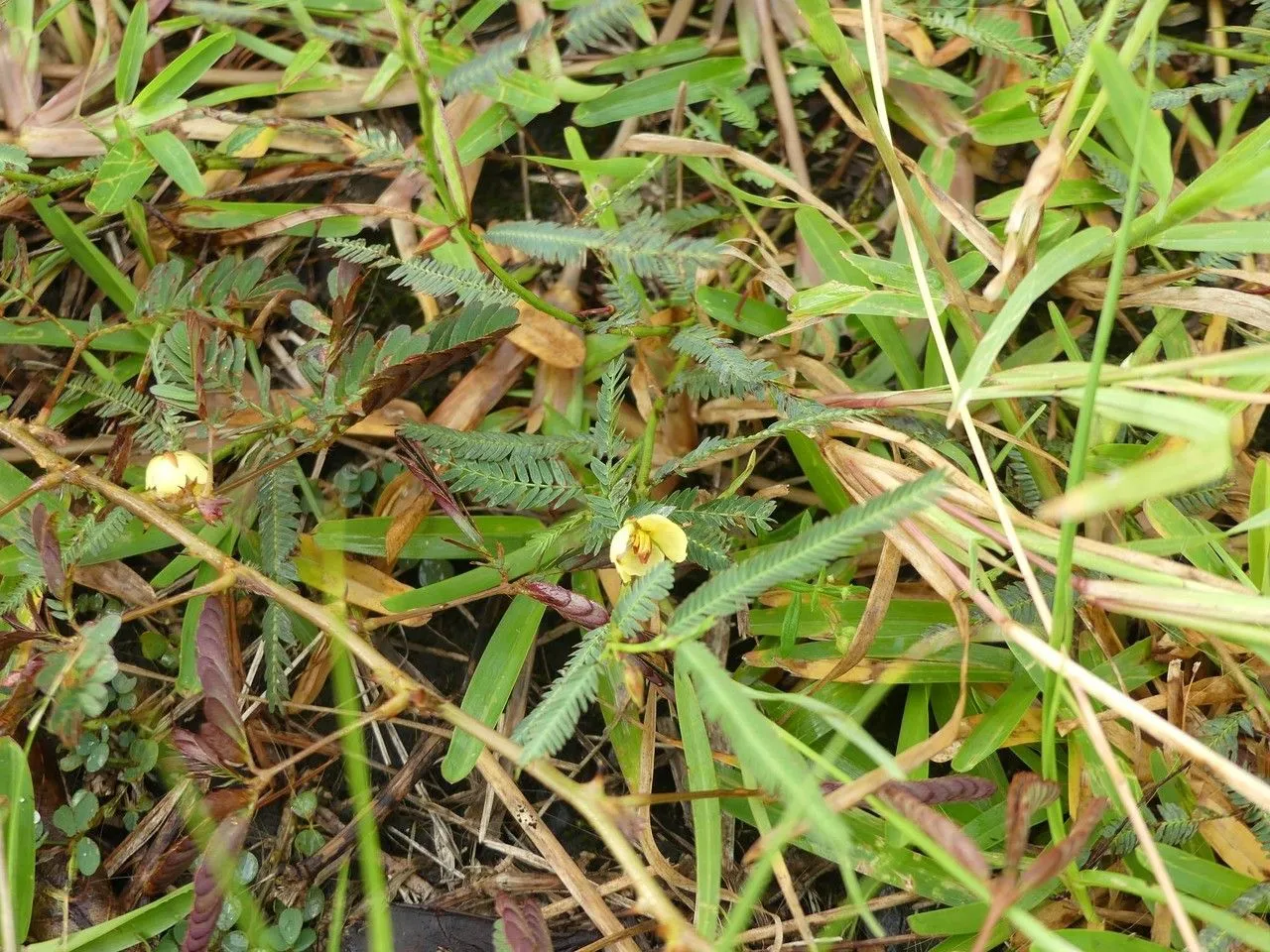
Author: Moench
Bibliography: Methodus 272. 1794
Year: 1794
Status: accepted
Rank: species
Genus: Chamaecrista
Vegetable: False
Observations: C. & E. U.S.A. to Trop. & Subtrop. America
The Sensitive-pea, scientifically known as Chamaecrista nictitans, is an intriguing plant species belonging to the Fabaceae family. First described by Moench in the notable publication “Methodus” in 1794, this plant has since garnered attention for its unique characteristics and widespread distribution.
Native to the diverse climates ranging from Central and Eastern United States to tropical and subtropical regions of the Americas, the Sensitive-pea thrives in a variety of environments. Its adaptability across such diverse geographical areas indicates a resilient nature and a broad ecological range.
The name “Sensitive-pea” likely derives from the plant’s physical responsiveness to touch. This sensitivity is an interesting feature, adding to the plant’s allure for both botanists and plant enthusiasts. While this trait is more pronounced in some related species, Chamaecrista nictitans exhibits subtle movements that make it a fascinating subject of study.
Typically, the plant manifests as a modest annual herb or subshrub. It’s distinguished by its pinnate leaves and small, bright yellow flowers that blossom predominantly in the warmer months. These flowers, characteristic of the Fabaceae family, contribute to the plant’s role in its native habitats, supporting local pollinators and contributing to the biodiversity of the regions it inhabits.
Overall, the Sensitive-pea is a notable example of botanical adaptability and ecological significance. Its widespread presence from temperate to tropical zones underscores its versatile nature, while its unique responsive behavior makes it a captivating plant for scientific study and observation.
Eng: sensitive cassia, sensitive partridge pea, sensitive partridge-pea, sensitive plant, sensitive-pea, wild sensitive-plant, partridge-pea, sensitive pea
En: Sensitive-pea, Sensitive cassia, Sensitive partridge-pea, Wild sensitive-plant, Sensitive partridge pea, Sensitive plant, Partridge-pea, Sensitive pea, Wild sensitive Plant, Partridge pea, Wild sensitive-pea
Taken Jan 21, 2021 by prithvijit (cc-by-sa)
Taken Oct 3, 2022 by John Zivley (cc-by-sa)
Taken Aug 3, 2021 by Prithvijit (cc-by-sa)
Taken Dec 26, 2020 by kiana DAVIS (cc-by-sa)
Taken Apr 30, 2021 by Fernando da Luz Schmidt (cc-by-sa)
Taken Jan 9, 2021 by Camacho Acuña Kenneth (cc-by-sa)
Taken Aug 19, 2019 by cmckeen cmckeen (cc-by-sa)
Taken Aug 24, 2022 by Zdub (cc-by-sa)
Taken Apr 30, 2021 by Fernando da Luz Schmidt (cc-by-sa)
Taken Apr 26, 2020 by Robert Faguet (cc-by-sa)
Taken Jan 5, 2016 by OTS – Zahawi, Zak (cc-by-nc-sa)
Taken Oct 1, 2009 by OTS – Oviedo-Brenes, Federico (cc-by-nc-sa)
Taken Jan 5, 2016 by OTS – Zahawi, Zak (cc-by-nc-sa)
Taken Jan 1, 1980 by OTS – Oviedo-Brenes, Federico (cc-by-nc-sa)
Taken Jan 1, 1980 by OTS – Oviedo-Brenes, Federico (cc-by-nc-sa)
Taken Aug 26, 2015 by EOL − Sam Kieschnick (cc-by-nc)
Taken Jan 5, 2016 by OTS – Zahawi, Zak (cc-by-nc-sa)
Taken Jan 5, 2016 by OTS – Zahawi, Zak (cc-by-nc-sa)
Taken Jan 5, 2016 by OTS – Zahawi, Zak (cc-by-nc-sa)
Taken May 20, 2018 by Hugo SANTACREU (cc-by-sa)
Taken May 8, 2020 by Gladys Nazario (cc-by-sa)
Taken Aug 22, 2022 by Julio Moguel Yanes (cc-by-sa)
Taken Oct 28, 2020 by Karina Monserrat Pérez Ramírez (cc-by-sa)
Taken Oct 1, 2009 by OTS – Oviedo-Brenes, Federico (cc-by-nc-sa)
Taken Jan 1, 1900 by EOL − W. L. Wagner (cc-by-nc-sa)
Taken Apr 17, 2019 by OTS – J. González (cc-by-nc-sa)
Taken Apr 17, 2019 by OTS – J. González (cc-by-nc-sa)
Taken Apr 17, 2019 by OTS – J. González (cc-by-nc-sa)
Taken Apr 17, 2019 by OTS – J. González (cc-by-nc-sa)
Taken Apr 17, 2019 by OTS – J. González (cc-by-nc-sa)
© copyright of the Board of Trustees of the Royal Botanic Gardens, Kew.
© copyright of the Board of Trustees of the Royal Botanic Gardens, Kew.
© copyright of the Board of Trustees of the Royal Botanic Gardens, Kew.
Growth habit: Subshrub, Forb/herb
Family: Myrtaceae Author: (F.Muell.) K.D.Hill & L.A.S.Johnson Bibliography: Telopea 6: 402 (1995) Year: 1995 Status:…
Family: Rubiaceae Author: Pierre ex A.Froehner Bibliography: Notizbl. Bot. Gart. Berlin-Dahlem 1: 237 (1897) Year:…
Family: Sapindaceae Author: Koidz. Bibliography: J. Coll. Sci. Imp. Univ. Tokyo 32(1): 38 (1911) Year:…
Family: Asteraceae Author: A.Gray Bibliography: Pacif. Railr. Rep.: 107 (1857) Year: 1857 Status: accepted Rank:…
Family: Fabaceae Author: Medik. Bibliography: Vorles. Churpfälz. Phys.-Ökon. Ges. 2: 398 (1787) Year: 1787 Status:…
Family: Aspleniaceae Author: (Cav.) Alston Bibliography: Bull. Misc. Inform. Kew 1932: 309 (1932) Year: 1932…